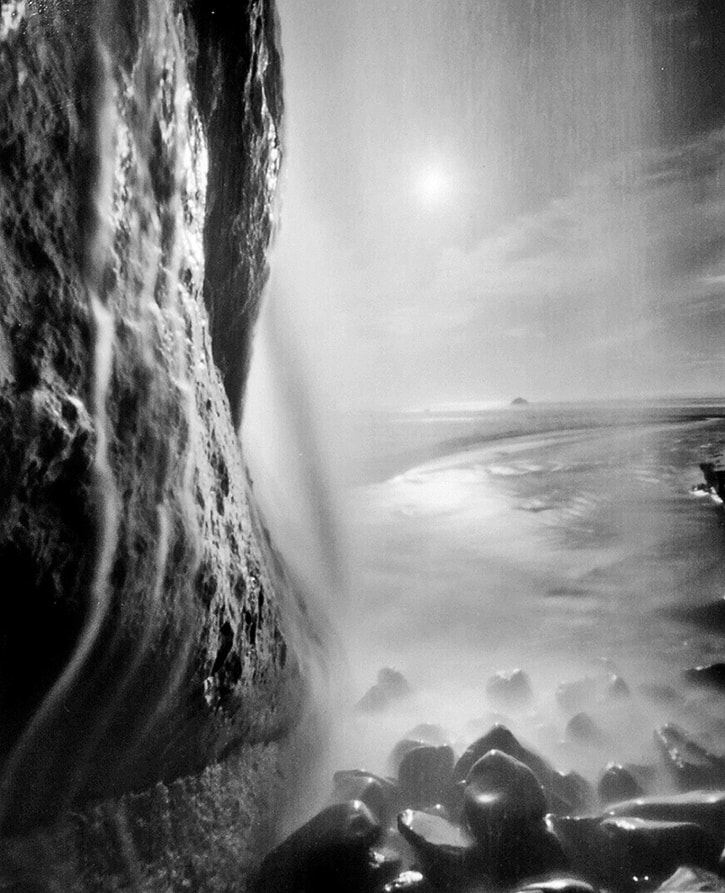A Canadian photographer is trying to bring one of the earliest forms of photography back into today’s artistic landscape and he’s coming to the West Coast to lure locals into it.
The Pacific Rim Art Society’s annual ArtSplash art show has arrived, bringing local and regional artists opportunities to showcase their skills and mediums.
One of those artists is Island-based photographer Ron Smid, who spent 25 years shooting Canadian landscapes with colour slide film before falling in love with the art of pinhole photography roughly five years ago.
“I saw some of these dreamy type images that were captured with a pinhole that couldn’t be captured that way with a lens,” he said.
“Some of my best pieces I’ve ever captured, in 25 years of traveling Canada, have been on a standard pinhole box camera that you can make basically out of anything: a shoebox, kleenex box, coffee can.”
Smid is excited to show locals how simple the process can be through workshops he’s hosting as part of ArtSplash’s festivities.
“It’s endless in its opportunities and I’d like to pass it on to the next generation or whoever’s interested. You just need a little bit of vision and some creativity to create images just as provocative as anything you can do with a computer,” he said.
“This is a great thing to pass on, especially to the youth that are enamoured by video games, computers; digital bombardment. This is something where they can break away from that, go out to nature and photograph forms with light striking them in particular ways and using their intuition rather than photographing and seeing something instantaneous.”
Workshop participants will create their own pinhole cameras by placing film inside small boxes that they’ve poked a tiny hole into. Light coming through the hole will project an image onto the film, creating a negative and Tofino’s Dolores Baswick will walk participants through processing their negatives in a dark room.
“The whole thing is, it’s about fun. It’s not about how technically accurate you can be. That’s the main thing and that allows people to learn better, if they don’t feel like they’re hindered or they’re trying to compete with anybody,” Smid said.
“There are no rules. Sometimes photographs will turn out darker but it might look good that way or it might look very spiritual and light and you might have exposed the film too much but it might turn out the way you want it...It’s very easy and there can be no right or wrong.”
He explained pinhole photography has roots as far back as 30,000 B.C. and can be traced through the 14th century Renaissance in the camera obscura artform.
“The first revelations of it were thousands of years ago in North African tribes that had animal skin tents and there would be a small crack within the skin of the tent to put some light through and they would see that the outside world would be projected on the inside of the tent,” he said.
Smid said the idea was picked up by Renaissance artists, like Leonardo DaVinci who would trace the images projected from a crafted pinhole.
It resurfaced in the 1960’s when photographers caught onto the ability to create lasting images by using a pinhole to project light onto film.
“The light will go through the pinhole and because it’s so tiny, it will defract through the pinhole and project an image just like a lens would but it will be softer, not as sharp,” he said.
“You basically have a long exposure time, so there’s movement that’s captured as blurs or streaks. The photographs are a little bit softer because there’s no optics so it has sort of a pencil sketch quality to it.”
Smid, who has never used a digital camera, said he hopes to keep the craft alive, and prevent digital photographic technology from completely taking over, by showing others the joys of working with more traditional and aged methods
“It’s the purest type of photography one can do,” he said of pinhole. “You can take a kleenex box and create photographs that can be regarded as extremely high art...That captivates me to this day and keeps me inspired to continue working in this photographic medium.”
He added experienced photographers would also take something away from learning the art as, without a viewfinder, they are forced to use intuition and feel to position their boxes and create images.
“It’s pushing the frontiers of my photography,” he said.
ArtSplash will run until March 25 and anyone interested in seeing what the Island’s artists have to offer is encouraged to check out the festival’s hub in Black Rock Resort’s lobby.
